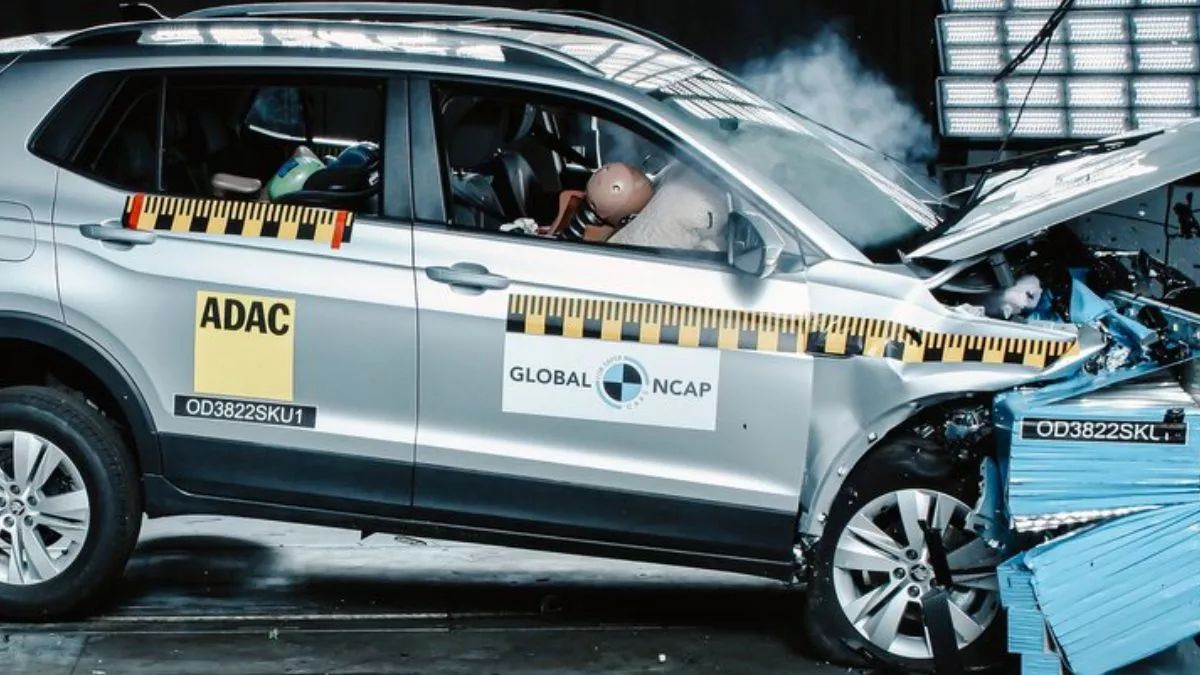- By Divanshi Sharma
- Thu, 24 Aug 2023 08:09 PM (IST)
- Source:JND
The Bharat NCAP, introduced by the Ministry of Road Transport and Highways, is set to be operational starting October 1. The Bharat NCAP or BNCAP is a significant step towards enhancing the safety of passenger vehicles in India. This move gains even more prominence considering the increasing count of fatalities and severe injuries from road accidents in the country. While bearing similarities to the Global NCAP, the Bharat NCAP uniquely incorporates India's specific driving conditions and regulations into its framework.
Similarities and Differences between Bharat NCAP and Global NCAP
Categorisation of Safety Ratings
In order to achieve a 5-star safety rating for adult occupant protection in Global NCAP, a vehicle must receive a minimum of 34 points, which are broken down into 16 points for the front crash test, 16 points for the side impact test, and 2 points for seat belt reminders.
To earn a 5-star rating from Bharat NCAP, a vehicle must have at least 27 points for adult occupant protection and 41 points for child occupant protection.
ALSO READ: Key Things To Keep In Mind To Get The Best Mileage From Your Bike
Types of Crash Testing
In terms of crash testing, the Bharat NCAP rules adhere to the Global NCAP standards. The safety in crashes of the vehicles would be assessed using three tests: the offset deformable barrier frontal impact test, the side impact test, and the pole side impact test.
Additionally, Bharat NCAP will also implement the integration of six airbags, electronic stability control (ESC), three-point seatbelts for all passengers, better emergency braking systems, and other safety features.
Speed Testing
The Global NCAP crash tests conduct the frontal offset test where the car is moving towards a deformable at 102 km/h. To resemble a collision between two cars travelling at 80 km/h, the test car and the deformable barrier are kept at a 40% overlap.
In the frontal crash test for Bharat NCAP, a speed of 64 kmph will be used, while 50 kmph and 29 kmph, respectively, will be used for the side and pole side impact testing. This shows that testing speeds for various impact assessment categories in the Bharat NCAP protocol are slower when compared with Global NCAP.
ALSO READ: Xiaomi Gets Permission To Manufacture Electric Vehicles, Aims For Mass Production By 2024
Private/ Government Owned
The Global NCAP, which has been recognised as the highest-ranking NCAP, is a privately held company. It receives funding from several charities and automobile manufacturers. The Indian government would be in charge of the Bharat NCAP.
Types of Cars
The Bharat NCAP regulations will also be used to assess and evaluate the performance of CNG and EVs along with the ICE vehicles.
Unified Rating
Unlike Global NCAP, Bharat NCAP will rate the vehicles uniformly and give them one combined rating, taking into account the results of both adult and children occupant category crash tests.

